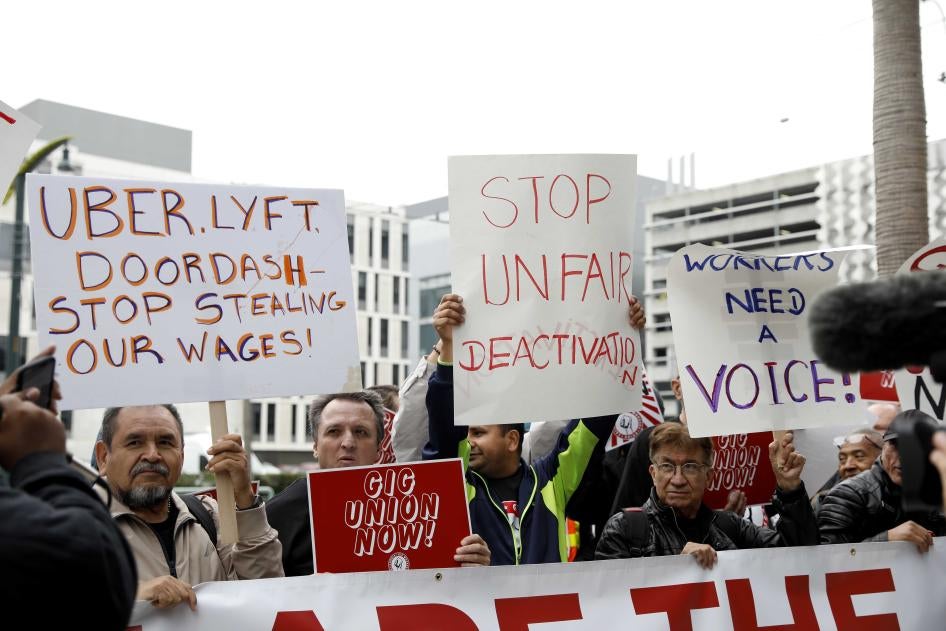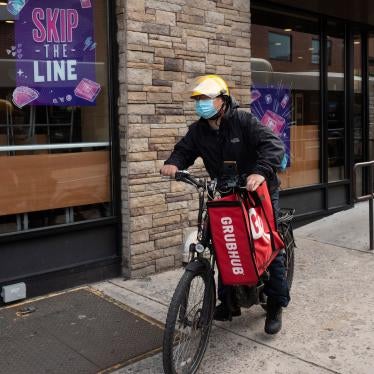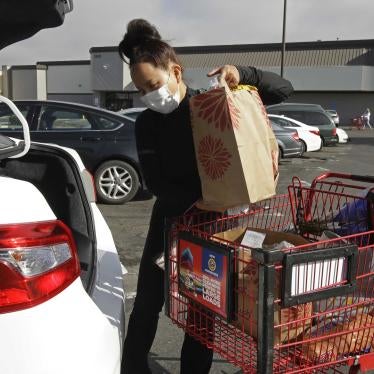One evening last October, Alex Tonsky started to feel like the Lyft app was working against him. He had been driving for hours, trying to boost his meager earnings that week. Later that night, he ended up in downtown Oakland, about 15 minutes from where he lived.
Tonsky turned on an in-app setting called destination mode, which supposedly matched him with rides closer to his destination of choice — in this case, home. He also used an additional feature in the setting to designate the time he wanted to arrive at home. Tonsky thought this feature would be straightforward to use and help him fit rides into his schedule. Instead, he became an unwitting player in an elaborate game — one that seems to favor app-based ride-hailing and delivery companies’ control over where and when their workers work.
Lyft kept matching Tonsky with rides in the opposite direction — toward San Francisco — which, with no guaranteed fares back to Oakland, could cause him to lose money. Lyft wouldn’t show Tonsky the destination of the trip requests until he accepted them. When he saw they were putting him farther from his home, he canceled them — five in a row. Then he gave up. Because Lyft suspends drivers for canceling too many rides, these cancellations put him at risk of losing his job.
“It almost felt like they were doing it on purpose,” he told me in an interview after the incident.
What Tonsky didn’t realize was that destination mode could match him with rides that ended in the opposite direction from where he wanted to be, provided the ride gave him enough time to get there by his designated time preference. Lyft says as much midway down on a “help” page on its website. But that information isn’t on the mobile app when drivers decide to turn the setting on.
Lyft is far from the only employer using gaming techniques to give workers the illusion of control. Uber and major food and grocery delivery platforms have all created similar features and incentives, enticing gig workers to work longer and harder and sometimes for less money.
Regulators are finally catching on. Last month, the Federal Trade Commission, the government’s consumer protection watchdog, announced that it is cracking down on unfair, deceptive and anti-competitive practices that hurt gig workers — including “ever-changing” and “inscrutable” algorithms that dictate working conditions.
Features like destination mode reinforce the narrative that gig workers are their own boss and properly classified as independent contractors. In reality though, many of these workers are barely scraping by and do not have labor protections like minimum wage, workers’ compensation and overtime pay.
In the meantime, gig companies’ gamification strategies grow subtler while remaining just as powerful. Uber’s new Upfront Fares initiative, for example, has revamped the company’s rate card to give drivers information about trip duration and destination before they accept a ride. Drivers have long demanded this information, but this feature comes with a twist: The company will be switching to an algorithm to calculate fares that is more opaque than before, moving away from fixed time and distance rates and incorporating dynamic factors such as real-time demand at the destination. (Lyft said it is launching a similar model, Upfront Pay.)
In an email, Uber said the new algorithm will help it better match supply to demand, such as by increasing fares for shorter trip requests so drivers are more likely to accept them.
But transparent pay raises can have the same effect, without the risks of hiding pay calculations behind an algorithm. Some drivers are concerned that the new algorithm will learn the lowest rate they are willing to accept, and that their overall earnings might drop.
In an email, Lyft said it is “testing” destination filters that enable drivers to set “a preferred driving radius where drivers will only get matched with rides that pick up or drop off in that area.” This could have helped Tonsky, but some drivers remain skeptical.
“It’s a feature designed to make drivers think they have flexibility, but it doesn’t work for most drivers,” said Erica Mighetto, a driver and organizer with the workers rights group Rideshare Drivers United.
Algorithms that dispatch jobs to gig workers and manage how they are paid can be gamified in ways that compromise their livelihoods and well-being. This problem is too big for the FTC to regulate alone. Last week, the Department of Labor announced it is considering new rules on employment status classification that could account for the gamified controls imposed on gig workers. After years of legislative and regulatory paralysis, it would be the right move. Gig workers deserve better.









